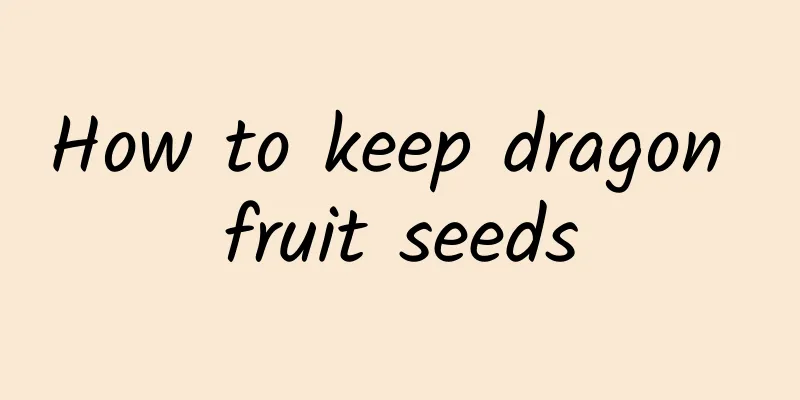How to transplant succulents so that they change color (steps for beginners to grow succulents)

How to transplant succulent plantsThere are usually two situations for succulent transplanting: (1) When the succulent seedlings that we sow or plant from leaves grow up , we must transplant them into larger pots, which will be beneficial to their growth. (2) If the succulent plant or old stump has been planted for more than two years and has completely outgrown the pot, we need to repot it, and repotting succulents is naturally considered transplanting. I have been growing succulents for about 7 years, and in this process I have transplanted countless succulents. Below I will briefly introduce the specific methods of transplanting succulent seedlings and mature plants (including old stumps). ① Determine the transplanting situationFirst of all, the succulent seedlings grown by leaf cuttings and sowing are not particularly well developed when they are transplanted. In this case, there is no need to trim the roots, but to dig them out with the roots and soil and transplant them into new pots . Of course, even if the succulents you cultivate have not been rooted, we cannot water them right after transplanting. At least put them in a cool and ventilated place for about 3 days before directly watering them. After watering, we can move them to an environment with sufficient light for normal maintenance. There is one thing we need to pay attention to : if the soil around the roots of the transplanted succulent seedlings has become compacted, we must loosen it when potting them, otherwise it will affect the normal rooting and adaptation of the succulents to the pot, and there is even the possibility of causing the seedlings to become stunted . ② Root pruning of succulent plantsSecondly, it is recommended to trim the roots when transplanting mature succulent plants (including old stumps), because after we remove them from the pots, we will find that after about two years of growth, their roots have completely filled the entire pot, and have also become dry and old. If we do not clean up the excessive capillary roots and dry and aging roots, they will become moldy and rot in the soil after transplanting. At that time, it will not only affect the growth of new roots, but also cause the entire succulent plant to become water-logged and black rot. Before transplanting mature succulent plants (including old stumps), we first cut off water for 7-10 days, then remove them from the pots and soil, and cut off some of the excess capillary roots at the bottom. Of course, all the dried roots will be cleaned up. ③Succulent rootsAfter finishing, we put the succulents aside to dry, and after drying for 1-2 hours, they can be potted and planted . When planting, dry granular soil must be used, and do not water them for the time being after planting. We can move it directly to a cool and ventilated place, and then wait for about 5-7 days to expose it to the rain or water it thoroughly, and then the succulent will quickly re-root and adapt to the pot. ④Succulent beheadingFinally, let’s talk about the issue of beheading succulents. Generally speaking, succulents do not need to be beheaded, unless they have severe leggy growth or have not produced side buds for a long time, and we want them to grow into a multi-headed cluster, then we can only solve the problem by beheading them. Spring and autumn are the best times to behead succulents. We find a sharp knife and rinse it with alcohol. Next, count upward from the bottom of the succulent to find the position between 5-6 leaves, then cut off the stem directly and apply fungicide. Mage's fleshy beheading (picture) After the succulents are cut off, they should not be exposed to the sun or rain for a short period of time. If the weather is bad, it is best to move them directly to a semi-open environment for maintenance, and wait until new buds emerge before moving them back to the outdoors for outdoor cultivation. For other succulents with taller stems, you don't need to leave the leaves when you cut them down, and they can still produce side buds normally if you cut them down directly. But it is recommended not to cut them all at once, but to do it in batches to ensure that there will be no problems to the greatest extent. |
>>: How to grow sprouted potatoes into potted plants (how to grow potatoes in pots at home)
Recommend
Why do the leaves of the umbrella tree produce oil?
main reason Insect pests, to be more precise, are...
How many kilograms of Fritillaria per mu
Fritillaria yield per mu Fritillaria usually star...
How to save seeds of roses
Introduction of Rose Seeds Roses have seeds, and ...
Cultivation methods and precautions of tuberose
How to grow tuberose Watering Tuberose should avo...
What fertilizer is best for fertilizing Dripping Guanyin? Four common fertilizers for breeding
The weeping angel is a fertilizer-loving plant. R...
Is white palm poisonous?
Toxic Parts Rhizome: contains oxalic acid and cal...
How to fertilize chrysanthemums so that they will bloom continuously in summer and autumn!
Environment for fertilizing aster: Choosing the r...
What other flowers are you growing? The leaves of these 8 flowers are 100 times more beautiful than the flowers!
Coral Bells Coral bells, also known as alum root,...
When is the best time to plant shepherd's purse seeds?
Planting time of shepherd's purse seeds Sheph...
The reason why the tips of Clivia leaves turn yellow and dry
1. Improper watering Spring and autumn are the gr...
How to grow garlic at home
1. Prepare the soil When planting garlic at home,...
How to plant persimmon trees
How to plant a persimmon tree: In fact, the metho...
What to do if ivy leaves turn yellow
reason The influence of light Ivy is a common gre...
How to propagate Dendrobium officinale at home? Is the survival rate of Dendrobium officinale high?
1. How to breed 1. Sowing: This method is not com...
How to care for and water jasmine?
Jasmine is famous for its evergreen leaves and wh...









